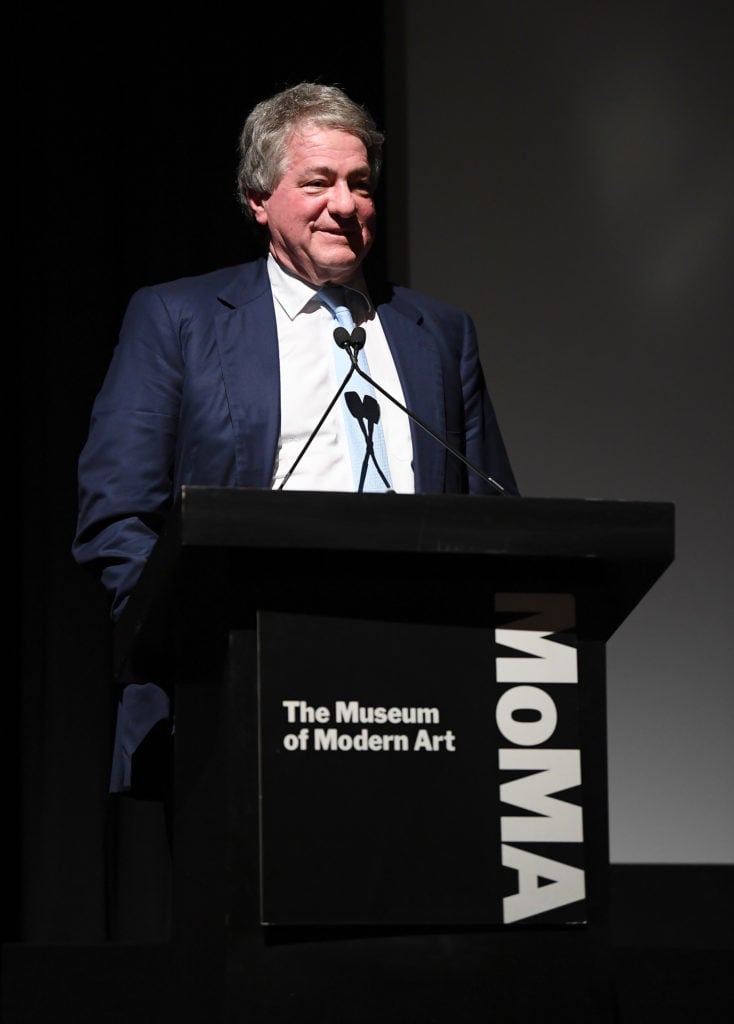Law & Politics
Documents Shed New Light on Leon Black’s Eight-Figure Art Deals—And How Jeffrey Epstein Helped Him Avoid Taxes
A representative for Black insists the deals were "legal and appropriate."

A representative for Black insists the deals were "legal and appropriate."

Eileen Kinsella

New details have emerged about eight-figure art deals by billionaire collector Leon Black that were orchestrated with assistance from the late Jeffrey Epstein, according to a report in the New York Times based on documents made available to the paper.
The revelations concern art bought and sold by the former Museum of Modern Art chairman in transactions where Epstein served as an advisor that relied on a now obsolete loophole that helped Black avoid millions in capital gains taxes.
Notably, the exchange of blue-chip artworks happened in late 2016, when Epstein was already a registered sex offender, having pleaded guilty in 2008 to a charge of soliciting prostitution from a teenage girl in Florida. Black remained one of his biggest clients after the plea, the Times report says.
Black’s hefty art advisory bills paid to Epstein came to light in a July 24 letter that U.S. Senator Ron Wyden, chairman of the Senate Finance Committee, sent to Black requesting further information about his business dealings with Epstein. Epstein’s fees for such advisory between 2013 and 2017 totalled $158 million.
On Nov. 23, 2016, Black sold an Alberto Giacometti sculpture, Figure Moyenne II, for $25 million, to a trust controlled by Epstein, according to the report. The entity was identified as the Haze Trust, which is named in legal documents filed in October 2021 by the government of the U.S. Virgin Islands demanding documents from executors of the Epstein estate in a sex trafficking case.
To pay for the Giacometti, Epstein had his staff wire $23 million into a Haze Trust account the day before the transaction. The money was wired from an account belonging to Southern Trust, which the Times called “Mr. Epstein’s main moneymaking company in the Virgin Islands [which] received a lucrative tax break from the U.S. territory. Most of Southern Trust’s revenue came from the fees Mr. Black paid,” according to the report.
That same day, a Black-affiliated company used the proceeds from that sale to buy a Paul Cezanne watercolor, Portrait de Vallier de Profil, for $30 million, the Times report says.
In order to avoid capital gains taxes, which are normally applied to fine art when an owner sells, Black, with Epstein’s help, took advantage of a 1031 exchange, or “like-kind” exchange, which allows investors to defer tax liability in transactions where they roll the proceeds of a sale into an investment in another asset of the same type.
This strategy was formerly available to art collectors—and was heavily favored by art flippers—because it allowed them to avoid paying capital gains taxes on profits from the sale of art by rolling the proceeds into another investment of the same type or “like-kind.” Congress killed the provision as it applied to personal property, which includes art, in early 2018. Real estate transactions can still qualify for the tax break.
Also identified by the Times is a Georges Braque painting, Le Guéridon, that Haze Trust bought for $5 million from one of Black’s art companies. Black bought another Cezanne painting with the proceeds from that sale.
“The 1031 exchanges used in this 2017 art transaction were completely legal and appropriate,” said Whit Clay, a representative for Black, in an email to Artnet News. “The New York Times reporting confirms the Dechert Report’s public findings more than two years ago that Mr. Black paid Epstein for legitimate financial advisory services.”
The Dechert report refers to a public document released by Apollo Global Management, the firm that Black founded and was CEO of, which set forth findings from an investigation into the relationship between Epstein and Black commissioned by Apollo and carried out by law firm Dechert. Black resigned from Apollo in early 2021.
According to the Dechert report, under the heading “Managing Black’s Artwork,” Epstein advised Black in a few areas related to Black’s artwork, including the formation of a new art partnership, the contested ownership of a Picasso sculpture, Black’s art loans, like-kind exchanges, and obtaining a potential advisory opinion from the New York State Department of Taxation and Finance regarding a contemplated art transaction.
The Times article also references Chicago Deferred Exchange Company, a financial firm that specializes in 1031 exchanges, which created the middleman for the transactions involving the companies linked to Epstein and Black. Chicago Deferred declined to comment.
U.S. authorities, including Finance Committee chairman Wyden, have turned up the heat on Black in recent months over these issues. As Artnet reported in August, Black’s $1 billion private art collection is a major focus of the 16-page letter sent in July.
Senator Wyden asked what the purpose of the art partnership formed with Epstein’s assistance was, as well as the specifics of his assistance. He asked for details regarding any art loans that involved Epstein, the specifics of Epstein’s role in those financings, and a list of “like-kind” exchanges involving art pieces valued at over $1 million.
For the 1031 exchanges, Wyden asked for a detailed description of the tax benefits obtained through the execution of such transactions. Lastly, he asked for a list of art sales valued at over $1 million that Epstein assisted Black with. Wyden’s office has not responded to Artnet’s inquiries.
Wyden reportedly gave Black a September 1 deadline to hand over documentation on these matters. It was not clear if or when the requested correspondence was provided to the committee.
More Trending Stories: